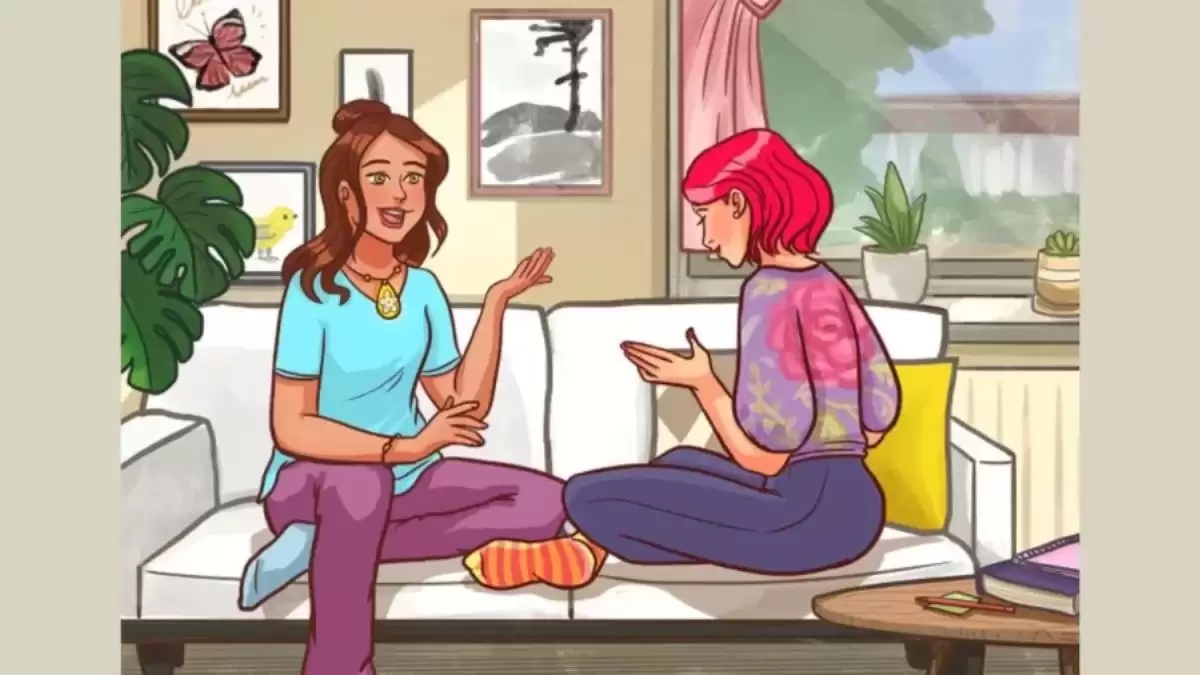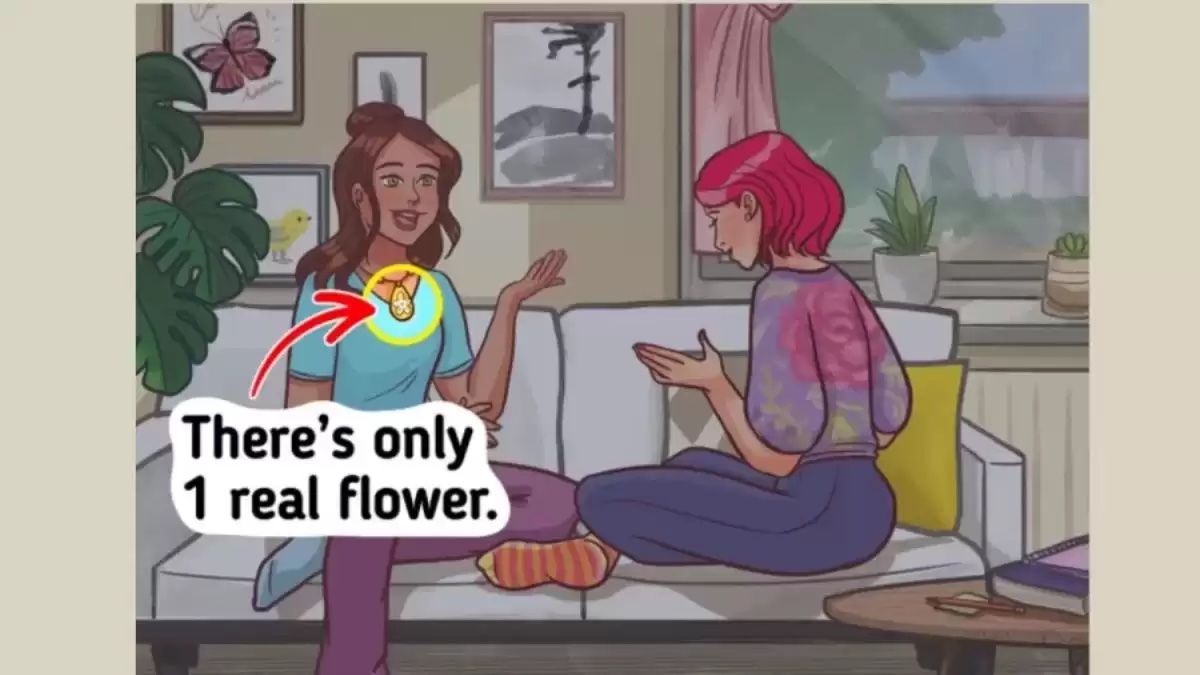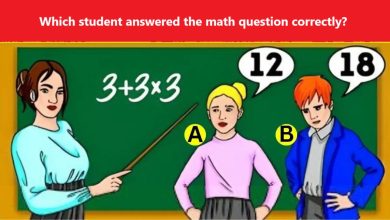Big Observation Brain Test: How Many Flowers Are There?

Big Observation Brain Test: How Many Flowers Are There? If you are curious to know about the puzzle that has been presented here, you can find it in the following article. Solving brain teasers can test your quick thinking and problem-solving abilities. Let’s see how long it takes for you to solve the puzzle presented below.
Brain Teaser Challenge For Excellent Minds
One of the popular types of brain teasers is the picture puzzle, which involves solving a visual puzzle or mystery. These puzzles can come in various forms, including jigsaw puzzles, spot-the-difference puzzles, and hidden object puzzles.
Regardless of the format, picture puzzles require the solver to carefully observe and analyze the visual elements presented to them in order to solve the puzzle. Spot the difference Puzzles involve two nearly identical images with subtle differences between them.
Big Observation Brain Test, The solver’s task is to find all of the differences between the two images. These puzzles often require careful observation and attention to detail, as some differences may be quite subtle. Hidden-object puzzles, on the other hand, involve finding specific items or objects within a larger image.
The objects may be hidden within the background or disguised in some way, requiring the solver to carefully examine the entire image to locate them all.
Furthermore, picture puzzles can be a great tool for stress relief and relaxation. The process of focusing on the puzzle and solving the visual mystery can help calm the mind and provide a sense of accomplishment once the puzzle is complete.
Big Observation Brain Test, Overall, picture puzzles can be a fun and engaging way to exercise the mind, as they require careful observation, analysis, and problem-solving skills. Additionally, they can be a great activity to do with friends or family, as they can be completed solo or as part of a group.
How to Solve Brain Teasers?
Solving brain teasers can be a fun and challenging activity that requires creative thinking and problem-solving skills. Here are some tips that can help you solve brain teasers:
Read the question carefully: Brain teasers can be tricky and often involve a play on words. Therefore, it is important to read the question carefully to ensure that you understand the problem correctly.
Break it down: Once you understand the question, break it down into smaller parts. Identify the key elements of the problem and see if you can simplify the question.
Use logic and reasoning: Brain teasers often require you to think outside the box and use logic and reasoning to arrive at a solution. Try to eliminate impossible or unlikely scenarios and use deduction to narrow down your options.
Big Observation Brain Test, Be creative: Sometimes, the solution to a brain teaser requires a creative approach. Don’t be afraid to think outside the box and come up with unconventional solutions.
Practice: Solving brain teasers takes practice, so don’t get discouraged if you can’t solve a problem right away. Keep trying and practicing, and you’ll improve your problem-solving skills over time.
Collaborate: Sometimes, solving a brain teaser can be more challenging if you do it alone. Consider collaborating with others and sharing your ideas and thought processes. This can help you arrive at a solution more quickly and efficiently.
Big Observation Brain Test, Remember that brain teasers are meant to be challenging, so don’t get discouraged if you can’t solve them right away. Keep practicing, and you’ll become a better problem solver over time.
Observation Brain Test: How Many Flowers Are There?
Picture puzzle questions are a type of brain teaser where a question is based on a visual image or picture. They come in various forms, such as riddles, brainteasers, or trivia questions. Irrespective of the format, solving picture puzzle questions requires the solver to meticulously scrutinize and examine the visual elements presented to them.
Big Observation Brain Test, One common type of picture puzzle is the “spot the difference” puzzle, which provides two nearly identical images with subtle differences between them. The solver must spot and identify all the differences between the two images, which can be quite challenging as some differences may be subtle.
Another type of picture puzzle question is the visual riddle, which presents a visual image or picture and poses a question based on what is depicted in the image. For instance, a visual riddle may present an image of a man standing in front of a door with three keys in his hand and ask which key will unlock the door.
Big Observation Brain Test, These puzzl es require the solver to carefully analyze the image and may require lateral thinking to arrive at the correct answer. We have presented a question to you in the picture below. Try to solve it following the rules that apply to this brain teaser. Your time to solve the puzzle starts now, so give it your best shot! If you were unable to solve the puzzle, there’s no need to worry. You can continue reading the article to discover the solution.

Source: fresherslive
Observation Brain Test: How Many Flowers Are There? – Solution
We will discover the answer to the puzzle presented in the above article. We are all eager to know the answer, so let’s get to it. Firstly, we will reveal the answer and then explain the reasoning behind it.
Don’t worry if you were unable to solve the puzzle; brain teasers are meant to be fun, not stressful. If you stay calm and relaxed, you may even solve the puzzle before us. Our belief is that every puzzle has a solution.
Wondering about the inner workings of optical illusion and visual conundrums? Chashmak is your source! Delve into our assortment to decode the mysteries behind these captivating visual puzzles.
Big Observation Brain Test, While some puzzles may appear challenging, the answer may be simple. On the other hand, some puzzles may seem easy but require hard work to solve. Ultimately, the difficulty of a puzzle depends on the specific puzzle itself.
Upon careful observation of the above picture, we have arrived at the answer. The answer is not only for those who did not find it but also for those who predicted incorrectly.
Big Observation Brain Test, It is okay to make mistakes as long as we learn from them. If you are curious to know the answer, continue reading the article. In every puzzle, there is a reason why a particular answer is correct.
While figuring out the answer, everyone might have their own reasons, but in the end, there will be only one correct answer with a specific reason. In the case of brain puzzles, this is particularly true. Let us take a closer look at why this answer is the correct one.

You can always view and study more brain teaser, intellectual games, puzzles and personality tests in the entertainment section of Chashmak Website. Share them with your friends if you like. Especially those who are interested knowing themselves better and having fun. Follow us on Instagram and Facebook and share your comments and suggestions.
Benefits of Brain Teasers
Picture brain teasers are a type of visual puzzle that can be used for various purposes, including:
Entertainment: Picture brain teasers can be a fun and engaging activity for people of all ages. They can be used at parties, social gatherings, or even as a solo activity to pass the time.
Educational purposes: Picture brain teasers can be used in schools or other educational settings to help students develop critical thinking skills, visual processing skills, and problem-solving abilities.
Cognitive development: Picture brain teasers can be used to stimulate cognitive development in children, helping them to improve their observation skills, memory, and attention to detail.
Therapeutic purposes: Picture brain teasers can be used as a form of therapy for people recovering from brain injuries, stroke, or other cognitive impairments. They can help to retrain the brain and improve cognitive function.
Recruitment tool: Picture brain teasers can be used by employers as part of their recruitment process to assess a candidate’s problem-solving abilities, attention to detail, and critical thinking skills.
Also Read:
Brain Teaser For Testing IQ: Can You Spot The Mistake In Living Room Picture Within 5 Secs?
Math Quiz Questions: Prove That You Are Smart By Solving This Riddle!
Are You Smart Enough As Jack To Find The Liar on the Camp Site in 3 Seconds? Try Your Luck!
Solve The Mystery Of The Woman In The Blue jacket And Her Husband. Try It




